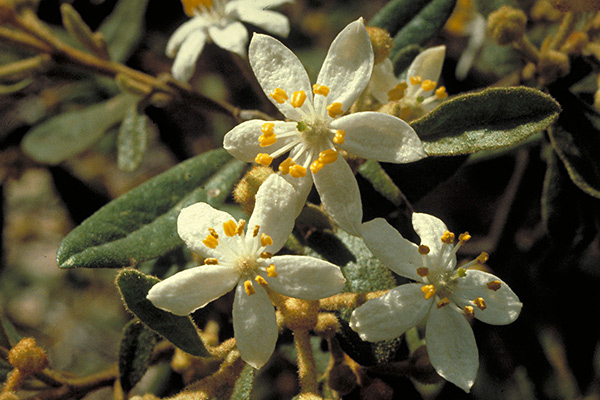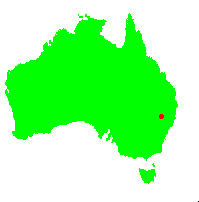General Description:
Asterolasia is a small genus of about 5 species, closely related to Phebalium and Leionema. They are generally small to medium shrubs which grow in sheltered, open forests. All are endemic to Australia and occur in the eastern half of the continent. Most are small shrubs with very aromatic foliage and producing star-like flowers in the white to bright yellow range.
Few members of the genus are widely cultivated although they have been grown by enthusiasts for many years.
A.hexapetala is a small to medium shrub which rarely exceeds 2 metres in height. The leaves are hairy, grey-green in colour and up to 4cm long and 2 cm wide. Flowers are white, 1-1.5cm in diameter with yellow stamens and appear in spring. In common with other members of the genus, the flowers normally have five petals. However, A .hexapetala frequently produces flowers with six petals.
A hexapetala has a restricted distribution in the Warrumbungle Ranges in the central west of New South Wales.
In cultivation the species the species performs best in a moist, well drained and slightly sheltered position (but not dense shade). The plants will usually tolerate periods of dryness once established.
In common with most members of the Rutaceae, propagation of A.hexapetala from seed is difficult but cuttings usually strike readily from current season’s growth.
* EPBC Act = Environment Protection and Biodiversity Conservation Act 1999;
ROTAP = Rare or Threatened Australian Plants (Briggs and Leigh, 1988)
For further information refer the Australian Plants at Risk page

Asterolasia hexapetala
Photo: Brian Walters
 Australian Native Plants Society (Australia)
Australian Native Plants Society (Australia)













